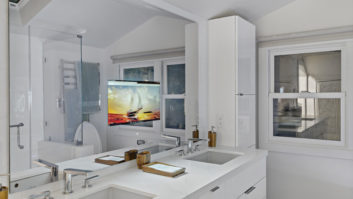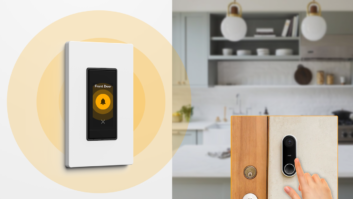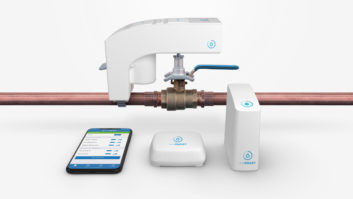One of the smart home concepts that crosses my consciousness on a regular basis is that of sleep. It is often combined with wearables and other wrist augmentation devices as part of the fitness push within the smartphone and smart home communities. And that is because sleep is part of fitness. Not getting enough sleep can affect your performance, your health, and your attitude. Heck, I’m staying half fit right now by being half asleep while I write this.
But connected sleeping is no longer being confined to something that you have to wear while you sleep. There are now devices that sit on your bedside table masquerading as lamps or alarm clocks. There are mattress inserts and complete mattresses that will measure you and adapt as you sleep, all in order to ensure that you maximize the time that you have to get unconscious, dream, and recharge. With this post, I want to cover some of the pros and cons of these various approaches with the understanding that I have not used any of them because… well, because most of them are expensive and to truly test them is not something that can be done in a showroom, but needs to be done over a month or more of actually sleeping on them.
Wearable Sleep Monitors

These are the most common smart sleep devices on the market. Every manufacturer who makes a fitness bracelet or smart watch seems to have jammed some sleep functionality into them. The basic concept is that the device monitors your heartbeat and how much you move to determine how restful your sleep was, and when and for how long you received the most benefit from sleep. Setting aside the accuracy of the optical heart rate monitors that most wrist bands and watches use, there are a couple of other reasons that I’m not a huge fan.

Withings Sleep Data
First, the information that they give you is after the fact. If you are sleeping restlessly, you won’t know about it until the morning when you check the data from the band’s app. It is also difficult to know how to act on the data. Was I sleeping restlessly because of the bean burrito with Dave’s Insanity Sauce slathered all over it or because my mattress was too hard or soft, or because my cat farted on my face (it happens)? It is hard to know. The various companies selling these claim that, if you pay attention to the data and think about it, it can help you attain a more restful sleep. Apparently, this is some kind of Heisenberg Sleep Principle where just being aware of the data changes the results.
Recharging is also an issue. Most wearables have a small battery life because that’s all the battery that they can fit into the device. For most of us, that means charging it while we sleep, something that is hard to do if you are wearing it while you sleep. Finally, I’m not a big fan of wearing anything while I sleep, so I’ll just let that image settle in.

S-Plus Sleep Monitor
A few of these challenges can be fixed by moving the monitor off of your wrist and onto something else. There are a few of these beginning to hit the market and they all use slightly different methods for collecting data. Some ask you to attach a button or “pill” to your pillow that links to a base unit. Others have optional sensors that fit between the mattress and the box spring. A few are able to monitor your sleep without having anything attached to you or your bed. Because that’s not creepy at all…
Aside from the not wearing anything or having to charge anything, there are a couple of other benefits. Most have some kind of white-noise machine, which can help some get to sleep faster. A few also have mood lights to help you wake up or fall asleep. They can be linked to various streaming music services or have a radio (the original streaming service) to help wake you up.
There is still the issue with the data feedback loop. If you observe the data that is collected, it may help you sleep better, but only over a week or more timeframe. There is no immediate, sleep-better-now benefit.
Smart Mattresses

ReST Bed Chamber SystemWhich takes us to smart mattresses and mattress pads. These are more active systems that incorporate ways to change the pressure within the mattress to make it more comfortable for each part of your body. Others are mattress covers that both sense and adjust temperature to help you sleep better. Others warn you when your bed is being used in an “inappropriate” way.
Of course, they also provide data on your sleep patterns, motion, and other conditions that may affect your rest. Again, this may be helpful over the course of a week or two. But in the meantime, they do something to try to fix your restlessness immediately.
The downside is that they cost more than a wristband or bedside gadget. But, if you’re in the market of a new mattress anyway, then these are only a bit more than top-end premium dumb mattresses.
That’s it this week. Back to sleep for schmoid.
For more IoT devices for your home, visit Qioto.







